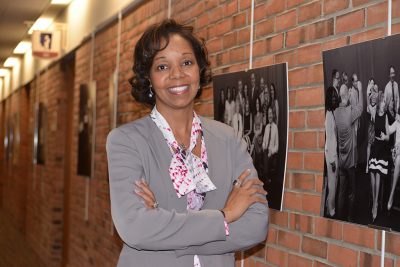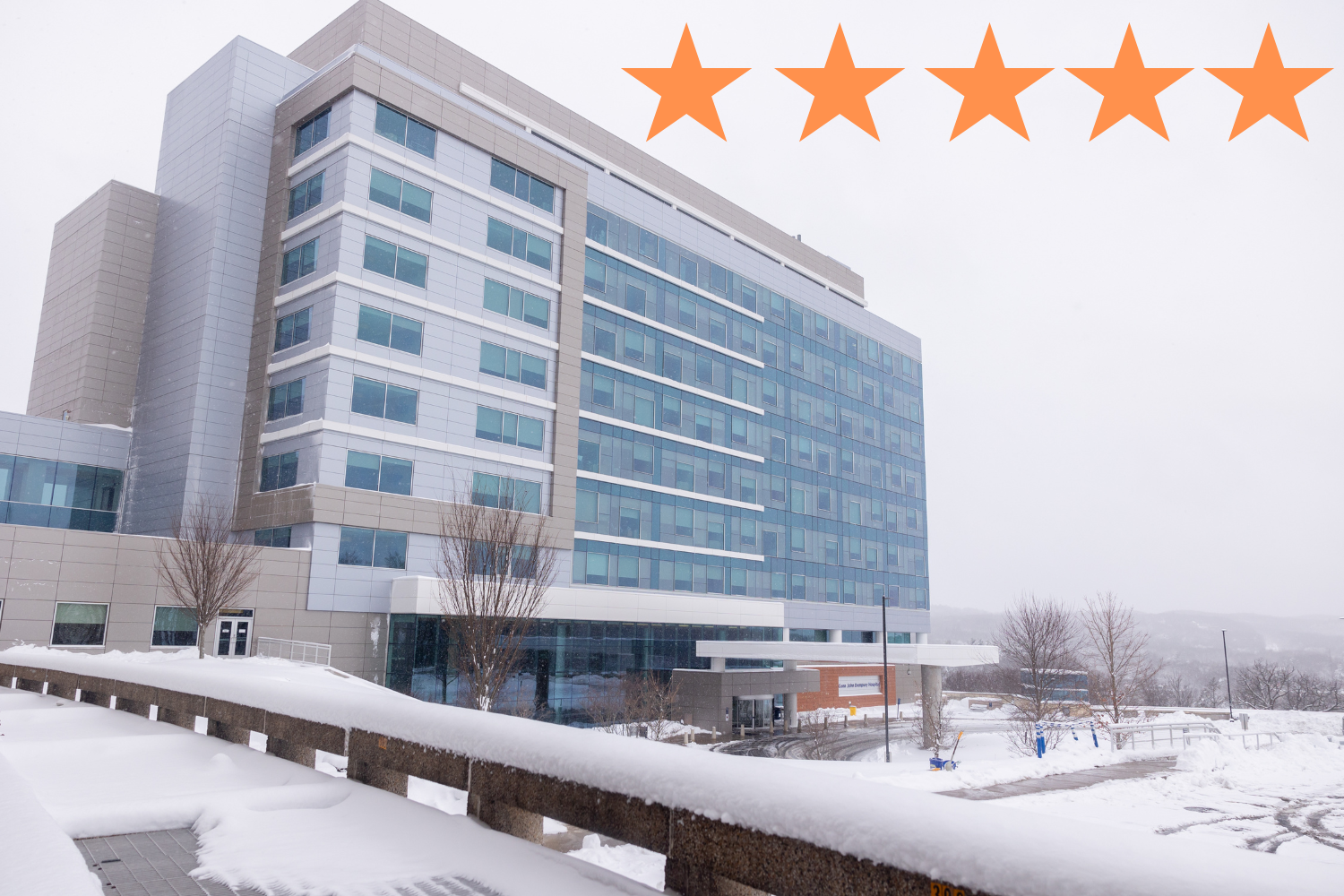Now an educator for more than 20 years, Roszena Haskins ’17 Ed.D. was not like her colleagues, who were inspired to become educators at an early age. It was not until her undergraduate college years at Temple University in Philadelphia, where she was studying radio, television, and film, along with English, that she thought about teaching.
On Temple’s campus, Haskins remembers observing many local inner-city children of color who were not in school during the day asking for money. Before handing over whatever change had, she spent time with them, talking about education. “You’re on a college campus, where there is potential and opportunity,” she would tell them. When she would ask them where they went at the end of the day, they would mention the local community center. During her junior year, she started volunteering there. “It was there that I found my calling,” she says.
Excited about her newly found passion in volunteering with underserved children, she went home to share the news with her family. They encouraged her to, “Finish your undergraduate degree first, come home and do some substitute teaching, and then consider going back for a master’s degree.”
That is exactly what she did.
Having grown up in Hartford, Conn., Haskins decided to go back to schools she was familiar with to get her substitute teaching experience. While there, she started to have questions about students and certain behaviors, and how they would respond to her or her instructions.
“There was one boy who was very active,” she says. “I found him to be joyful, and I wanted to understand him better. Then I learned about this thing called ADHD. That experience led me down the pathway to special education.”
Once she had a year of practical experience under her belt, Haskins went on to complete a graduate program at University of Saint Joseph in West Hartford, focusing her student teaching at the elementary and high school levels before entering her first official year of teaching at Hamden (Conn.) High School.
“I loved it,” she says. “My first year of teaching was probably the best of my career.”
Transition into Administration
After teaching for three years, she was invited to apply for a special education teaching position at a high school in Alexandria, Va., an area that had been a home away from home for Haskins during her undergrad years, where she had lots of friends and connections.
Within a year, Haskins was promoted to department chairperson, and then one year later, tapped for a central office, district-wide position, one she accepted willingly.
“Part of my training in Connecticut was to be a team player, to pitch in and leave no student behind, and do whatever it took to keep students central in everything you do,” she says.
In the new role, she served as the middle school special education coordinator and as supervisor for school nurses and school psychologists for a 11,000-student school district. Continuing her education — this time in school psychology — became top of mind again for her, though she did consider becoming a nurse.
“After supervising them, I learned so much from the nurses, about caring, compassion, service delivery, and the whole child,” Haskins says. “I learned to apply a holistic approach to my practice, and this I learned from the nurses.”
She completed an educational leadership graduate program at George Mason University, when Connecticut came calling once again. Ultimately, Haskins found herself a school administrator role in West Hartford, where would she spend 11 years. There, she connected with the then superintendent, Karen List ’83 Ph.D., a Neag School alumna who would become an inspiration and advocate for Haskins, and who would appoint her director of continuing education for the district.
“I’ve had the privilege of working with Dr. Haskins for 11 years,” says List. “She accomplishes her work with dignity, elegance, and actions that reflect the best interests of students. High expectations guide her decision-making and communicate confidence.”
Haskins also connected with the current superintendent, Tom Moore, who she calls a “tremendous mentor, colleague and friend” during her time at West Hartford. Moore — along with the school board — appointed Haskins to her current role as the director of continuing education and diversity advancement.
“I created the role of director of diversity advancement specifically with her in mind,” says Moore. “Hers is the clearest voice for justice that I have known in my life, not because she shouts at people, but rather explains to people. She has a sense of empathy that enables her to truly sense what others are feeling, and to reach them in ways that make them want to be better human beings. Roszena’s work in West Hartford, and her legacy, will be felt for generations.”
Haskins started to reflect on some of the most gifted leaders, mentors, and coaches she had throughout her career. “I wanted to develop my craft like them,” she says. “I wanted to develop research-based knowledge and skills to emulate some of the best practice I’ve seen in the field.”
Realizing a doctorate would be the next step for her, she reached out to her mentors and teachers, who knew her goals and what she wanted to do. They all recommended the Ed.D. program in educational leadership at UConn. “I remember someone saying, ‘UConn is the flagship for what you want to get out of your educational program,’” Haskins says.
List, who was an adjunct professor in the Neag School’s Department of Educational Leadership and is now a project director, was one of those advocates for UConn.
“I recommended she consider the Neag School, knowing she could meet the challenge,” says List. “Also recognizing that not only would she benefit, but those in the program with her would be enriched by Roszena’s participation.”
Support From Mentors
For Haskins, a full-time school administrator who also had a family at home, the doctoral program was a busy time. “It was challenging to run a building, and to be a student yourself, and really focus on academic requirements,” she says.
List, Haskins says, proved very supportive and understanding, and served as a sounding board when she needed it. List even recommended Haskins to be an instructor for Neag School’s PK-3 Leadership Program, given her expertise in special education, diversity advancement, and school administration.
“She facilitates structured opportunities for cohort members to work together to construct meaning and apply it to their individual needs,” says List. “She incorporates research and adult learning theory. I could think of no one better to lead a module on Equity, Excellence, and Early Success for our PK-3 Leadership Program.”
Haskins would find another mentor during her time in the Ed.D. program: her doctoral faculty advisor, Neag School assistant professor Sarah Woulfin.
“She created a rigorous learning culture, and I found it to be challenging and rewarding,” says Haskins. “She was my strongest connection with the program, and I found her to be a gifted educator. She demonstrated skillful applications … and nudged me across the finish line. She was there, supportive, and I didn’t want to let her down.”
Woulfin says Haskins is a good fit for the program and for education in Connecticut. “Neag’s program was an excellent fit for her desire to learn about current research so that she could make effective, equitable decisions to benefit Connecticut’s education system.”
“Roszena’s research will have an impact on both districts and the community college system,” adds Woulfin. “Her research illuminates challenges in the transition from high school to postsecondary education — with particular attention to gaps in the nature of instruction in community colleges.”
Inspiring Equity
On the tail end of finishing her Ed.D., Haskins embarked on yet another initiative, exploring the realm of diversity with fellow colleague and Neag School alumna Kerry Jones ’13 ELP through a multimedia storytelling project titled “Inspiring Equity” within their town of West Hartford, Conn.
“It was Kerry’s brainchild, and we collaborated to lead this project that would show diversity around West Hartford,” says Haskins. “It was intended to inspire community conversation and dialogue, and advance equity for our children.”
The project, which was on display this past December, is yet another reflection of Haskins’ ever-curious, positive approach to the field of education.
“One of the things I’ve learned along the way was not to close doors, just to be open to opportunities, to be open to listening to them,” she says. “I’ve had so many dynamic experiences and doors open for me, but I know I want to stay in education.”
To learn more about the Neag School’s Ed.D. program, visit edlead.education.uconn.edu.



